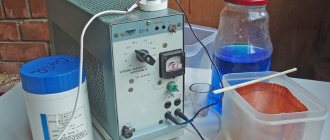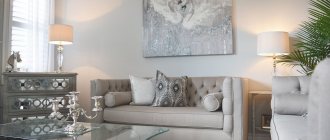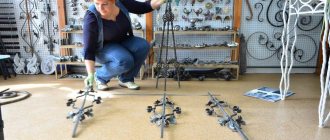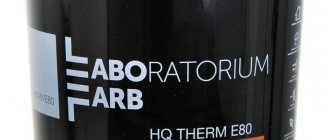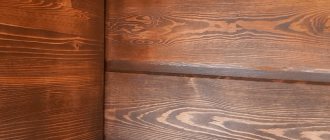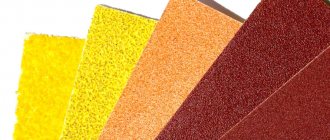There is something about retro style that touches the hearts of thousands of people, which may be why antique painting has not gone out of fashion for several decades. Doors with brushing and patination always top the top sales, as they create a unique aura around themselves. Also, the advantage of this kind of doors is that they retain their original appearance for a long time. Perhaps someone knows that painting wood to look antique is not such a difficult task and can be done independently. You will learn how to paint wood antique in the following article.
Aging of furniture, mirrors, stucco and other interior elements
Artificial aging of furniture, aging of mirrors, stucco moldings have gained extraordinary popularity in the modern world
Artificial aging of furniture, aging of mirrors, stucco moldings have gained extraordinary popularity in the modern world. Antiquity always remains in fashion. No matter how much effort, money, or imagination you invest in the design of walls, floors, and ceilings, only furniture will give your interior completeness and harmony. How to give furniture the effect of aging, turn it into a real jewel that carries the spirit of history, even by touch giving rise to a feeling of the mystery of bygone days and the desire to solve it? There are special technologies for aging surfaces for this. At the same time, despite the ancient, truly antique appearance, the furniture will be new, strong, and durable.
Aging of furniture: artificially aged furniture is used in the design of offices, restaurants, pubs, and luxury home interiors to give them an aristocratic and noble appearance. The aging effect breathes life into your furniture and gives it personality.
Aging of wood (doors, floors): The effect of wood aging is mainly applied to doors. Doors are an interior detail that immediately catches the eye. They must be in harmony with the surrounding space. Antique doors will give you, as well as your guests or clients, a feeling of reliability, inviolability, trust, security and comfort.
Aging of mirrors:
quite a popular trend in aging things. In country and Provence style interiors, artificial aging of mirrors is often used.
Aging technology:
The most effective aging techniques for giving various surfaces the effect of aging are:
brushing, patination and craquelure.
Brushing is the artificial aging of wood specially treated with metal brushes. With this treatment, patterns of growth rings are revealed on the surface of the wood, and relief is acquired. Thus, the wood acquires the effect of aging.
Patination (patina, patination)
- This is the highlighting of surface texture. In order to achieve the aging effect, a patination composition is used, which is applied by a craftsman using a special technology. There are three patination options: gold, matte and silver. Patination is also used in combination with tinting.
Craquelure:
craquelure creates a network of cracks on the surface (cracking effect or craquelure effect). This is evidence of the antiquity of the thing. It takes centuries for such a network of cracks to appear naturally. To artificially create such cracks, there is a special craquelure technique, as well as decorative plaster with a cracking effect. Then you will quickly get a thing in which time speaks. Craquelure in the interior gives a certain charm, making it unlike hundreds of other “European-quality renovations”. You can order our craftsmen to create single-phase craquelure (with ordinary dark cracks) or two-phase. Colors can be very different, but it is more interesting when they are contrasting.
Coating of a metal product
Paint for interior doors can be applied even to metal structures. The metal is prepared for painting according to a scheme that repeats the steps for other materials. A primer with high adhesive properties is pre-used.
KM for metal for a street door is selected according to several criteria:
- fire retardant composition;
- anti-corrosion material;
- electrically protective.
The shade of paint should be in harmony with the color of the facade.
In industry, metal is coated with a wood-effect powder composition. The metal surface retains its qualities and acquires an attractive appearance. The powder dye is applied with a special sprayer in a heat chamber at high temperatures. The doors are coated with oak, walnut, beech, cherry, and pine. It is impossible to distinguish it from a natural wooden surface. The dye covers any metal. The issue of decorating metal products often arises at the time of creating the interior of a house. Coloring is carried out in stages. The metal is carefully prepared.
- The metal surface is degreased and dirt is removed.
- An anti-corrosion compound is used.
- The metal is coated with CM.
Matte dye is used. To apply it you need a brush. Hand movements are made along the texture, with a jerky line of the pattern, scratching the coating, which allows you to create an imitation of wood texture. When the first coat of coating has dried, the second is applied. This will create a surface with a pattern of wood structure.
Types of patina for wood
Initially, patina meant a layer of oxide or salts that forms on the surface of a metal over time. Later, that natural coating on old wood - oak, beech, which is formed due to the gradual chipping of soft wood fibers and filling the pores with wax or oil - depending on what product was used during care, also fell into the same category.
This effect is obtained just at home, since it is created with your own hands, but for a very long time. And it is clear that you can get a natural touch of antiquity only on solid wood, but not on MDF or chipboard. However, if you resort to a home master class, you can do this artificially, and much faster. Special compounds and special techniques are used for this.
Painting wooden structures
Wood-like painting of a wooden base is carried out if restoration work is necessary. Over time, its appearance is lost and it is necessary to update it. The second reason is a change in the tone of the product.
The technology for painting wood is the same as for other materials, the surface of which imitates its structure:
- The old covering layer is removed with a spatula.
- The surface is coated with a special primer or drying oil.
- The paint is replaced with clear varnish.
- Before painting to resemble wood, the surface of the base is treated with a brush with stiff bristles. This way you can achieve a resemblance to a natural pattern.
Painting it with your own hands gives it a new look. The CM is applied along the fibers of the natural base. The movement of the hand is not interrupted. Areas where contact with moisture or exposure to the sun's UV rays are expected are carefully painted. The more layers you apply, the longer it will last. This increases the gloss of the tone.
Pre-treatment with a primer reduces dye consumption. The paint layer clings more to the wooden base.
Powder coating technology is used in the manufacture of furniture, windows, and doors.
Brushing technology
The artificial aging technique cannot be applied to every type of wood. The main requirement: it must have pronounced alternating hard and soft growth rings. The technology can be implemented in a wooden frame made of oak, walnut, pine, ash, larch, but is not applicable for pear, alder, linden, beech or maple.
The artificial aging procedure is performed using manual brushes or brushes attached to a drill or grinder. It consists of three stages:
- At the first or roughing stage, soft fibers are selected. Metal brushes are used for this.
- Then the board is sanded with synthetic bristles with an abrasive coating.
- The last stage is polishing. It is carried out using a hair or sesal brush.
Advantages of brushing
Painting wood after brushing allows you to highlight the textured surface: the depressions are painted in dark tones, and the ridges in light colors
Painting wood after brushing allows you to highlight the textured surface: the depressions are painted in dark tones, and the ridges in light colors. You can carry out patination, in which special compounds penetrate the open pores and emphasize the texture of the wood, create a cracking effect on the surface, or cover it with varnish. The choice depends on taste preferences.
Painting and brushing of a log house is a fairly popular service in Moscow. It allows you to get a number of advantages:
- Original appearance due to the variety of troughs and ridges of the surface;
- Individual building design created by an artificially aged coating;
- Functionality. Brushed wood successfully masks emerging defects, which are clearly visible on a flat floor or wall.
The structure, processed according to the specified method in compliance with the technology, looks elite and even rare.
You can also place an order for artificial aging of wooden surfaces (boards, etc.) using the form on the website. See approximate price above.
Preparing for aging furniture (antique painting)
Remove handles and other fittings from furniture. If the furniture is polished, remove the polish with a special compound from a hardware store, following all safety rules and instructions on the packaging.
If the furniture is painted, then the old paint should be sanded until smooth (if this does not contradict your main idea, see the effects of antique painting below). If the furniture has not been painted, then you need to remove with fine sandpaper the top layer of dirt, grease and everything else that has fallen onto the surface of the furniture over many years of use (use a respirator to protect your respiratory tract from dust and ventilate the room well).
All dust should be thoroughly vacuumed from the corners, then wipe the furniture with a damp cloth and let it dry. If the surface of the wood is too greasy, wash the furniture with soapy water and let it dry.
We don't need furniture putty. The idea of the project is precisely the effect of aging, (slight) wear of furniture, so we want to emphasize defects in the surface of the wood, and not disguise them with putty.
Chalk paints for the effect of aged furniture are produced in a wide range of fashionable blurred
To age wood and paint antique furniture, Arina recommends using special chalk paints for home creative projects (these are produced under the brands Autentico, Annie Sloan, etc.).
Chalk paints for the effect of aged furniture are produced in a wide range of fashionable blurred (as if faded with time) shades. Chalk paints can be used on a variety of surfaces (including clay and even plastic!), and no pre-treatment of the surface is required at all.
If you don't have chalk paint, use regular water-based matte residential wall and ceiling paint (NOT bathroom or kitchen paint!) from any hardware store. When using such paint, it is better to first prime the surface of the wood with a water-soluble primer (primer).
A universal (2 in 1) primer prevents natural oils from the wood from seeping onto the surface of the base paint and promotes better adhesion of the paint to the surface of the furniture. To paint antique furniture, it is better to use a paint roller rather than a brush. Before starting work, protect the surrounding area with plastic film; it is even better to work outside.
General provisions
The use of this paint can turn any thing or surface into an antique. After applying it, as it dries, contrasting cracks will spread right before your eyes, like lightning in the night sky. Their tonality, thickness and size can be controlled. But the random direction will ensure the uniqueness of each new cladding .
White lightning on a red sky
The effect itself, in essence, occurs due to the fact that the top layer dries faster than the bottom and has no elasticity.
The best option would be acrylic paint for walls with a cracked effect due to a lot of tangible advantages:
- Aesthetic appearance reminiscent of antiquity.
Ancient Greek motif
- Environmental friendliness and safety of use. This is due to the fact that the base in such a suspension is water, and the binding substances are acrylates.
- Affordable price due to the use of inexpensive raw materials.
- Good vapor permeability. This allows the walls to “breathe”, extending their service life.
- Implementation of high-quality masking of possible surface defects.
- High waterproofing. Can be used in rooms with high humidity, such as bathrooms and kitchens.
- A huge range of color combinations for the bottom and top coats of paint.
Examples of possible color solutions
- Simple instructions for use. The use of special compounds is not much different from the use of classic paints.
If you are planning to work with an iron surface, then the following compounds applied before painting with craquelure varnish will help you achieve a greater degree of protection:
- Zinga conductive paint will prevent the appearance and spread of rust.
- Fire-retardant paints for metal Polistil will increase the level of fire safety.
Basic painting of antique furniture
Start painting antique furniture from the back (invisible) side. This way you can get the hang of it, understand how much paint you need to take per roller, and you might even want to adjust the shade of the paint itself. Next, move to the front side of the piece of furniture, applying the paint in broad strokes, without leaving smudges.
Before applying a second coat of paint (if necessary, see below), check for smudges (possible smudges should be corrected with sandpaper, and then go over the area with an additional coat of paint). Between applying layers of paint to furniture, keep the roller in water to prevent it from drying out.
Apply the second coat of paint when the first one is completely dry (this is important!). The drying time of the paint depends on environmental conditions (humidity and air temperature) and can range from 1 to 5 hours.
Paint for aging wood
Real antique items are very expensive. They are refined and elegant, but not everyone can afford such luxury. Believe me, this should not upset you, many ways have been invented to turn modern wooden objects into retro products without incurring large financial costs.
PROMO We will paint façade panels for your home, lining and imitation timber for interior decoration in the workshop. A large selection of colors will allow you to find the best solution for you. Let's protect the tree from negative factors. Let's add aesthetics. They say about us: “Lesobaza paints furniture of furniture quality!” And it is true! See for yourself!
Painting production Lesobaza.rf
Aging wood with paint is one of the ways to give a wooden surface a unique look, to present all the outrageousness of the product, its originality and uniqueness. But before carrying out work, it is necessary to carefully prepare the surface of wooden objects and select the appropriate paint for the aging process.
Artificially aged wood
First of all you should:
- clean the entire surface of dirt, previous layers of paint or varnish, twist if it is furniture or windows/doors, handles and other elements;
- the surface is polished first with a coarse-grain abrasive, and then “walked” with fine grain;
- remove loose dust and dirt particles;
- applying primer - antiseptic;
- It is not recommended to use putty to cover up cracks and chips; they will add charm to the product.
The work on preparing the surface for painting is completed; now you should test the paint to see how it will look on samples to make sure that the color is chosen correctly.
4
Aging of wooden products from the company Lesobaza.rf
PROMO We know firsthand how to create a comfortable and aesthetic atmosphere in a country house. Interior decoration of a house using decorative elements made of wood that will harmoniously fit into the interior of your home is a science mastered by the specialists of our company. Together with the design department, painting production and carpentry factory, we will create exactly the harmony and comfort in the house that you strive for.
Construction and installation department Lesobaza.rf
CRACKLE METHOD With this method, use a special craquelure varnish. Due to its properties, the varnish produces many small cracks on the surface, and the surface itself resembles a cracked, burnt-out material.
The composition is applied according to the following scheme:
- the treated surface is covered with the desired paint, you should pay attention to one nuance, the cracks will take on the color of the first layer of paint;
- let it dry completely and the next layer is craquelure varnish;
- applying a second coat of paint;
- final coat of clear varnish.
1
Aging wood using the Crackle method
Also, for the finishing coat, you can resort to paint that differs in tone from the previous layer. The thicker the layer, the more “solid” the cracks. You can achieve cracks on the surface in another way:
- we paint the wood with any paint, except for those compositions that are water-based;
- Without waiting for complete drying, apply the next layer of acrylic paint.
This option is based on the properties of acrylic paints that dry very quickly, resulting in the formation of “dimples” through which the previous layer of paint can be seen. This treatment pleases the eye of lovers of Provence or rural Country styles.
Two-stage craquelure
PATINA PAINTS are paints for aging wood, for successful decoration, for example, antique wood furniture. To do this you need:
- select a wear-resistant varnish that forms a durable film on the surface and apply it;
- wait for complete drying and cover with patina paint;
- After about half an hour, we continue the process, armed with a metal sponge or sandpaper;
- clean the surface of debris;
- Finally coat with varnish.
Patina on cedar lining
Enjoy the special beauty of “antique” items, feel that era and its brilliant sides. In order to give wooden products a dilapidated appearance, battered by time and adversity, the following is necessary:
- here it is necessary to use all possible tools to add “years” to the tree, that is, to make holes, as if beetle larvae live inside, for this there are drills and drills, and also to add chips and scratches yourself;
- the selected base layer of paint is applied too thick so that the texture of the wood is sufficiently noticeable;
- treat with sandpaper or a wire brush until abrasions occur;
- the second layer of paint, differing in color, is distributed with thin brush strokes, in some places it is possible to shade the paint.
The brushing process will give the wood an antique look by scraping out the soft fibers and then applying a layer of matte acrylic paint. After it has dried, use a metal brush or abrasive to reproduce the desired abrasions and apply a second coat of paint.
Patinated furniture
Aging paint also includes hard WAX; it is enough to distribute it in the right places, in interrupted areas, and coat it with varnish. If you use dark varieties of wax when processing grooves and depressions on the surface of wood, you will get deeper aging. This method is striking in its simplicity and realism and gives an antique look to any item.
CHALK PAINTS give the desired results, they have a wide range of colors and shades and can be used on any surface.
Aging of wooden furniture
Painting can change the aesthetic appearance of absolutely any wooden object. The process is simple, you can do it yourself, it is a very interesting and exciting activity for all family members. Don’t forget to add appropriate accessories to the items you have aged, otherwise modern handles seem completely out of place on old, grandma’s furniture.
Antique effects, aging furniture
How many coats of paint you need to apply depends on the style you choose. For a 'simple' look, a rough and weathered effect, or wood grain showing through the paint, one coat is sufficient. For a more traditional, sleek furniture look, go over the first coat of paint with fine sandpaper, remove any dust with a brush, and then apply a second coat of paint.
- The effect of wear and tear. After applying the paint, take a fine sandpaper and begin to scrub the paint in places where it naturally wears (on corners and ridged surfaces, near handles). Do this until you reach the desired level of weathering: primer, bare wood, etc. Now you can easily sand the entire surface of the furniture.
- The effect of old paint showing through.
After applying two layers of base paint, use a dry brush to lightly apply paint of a different color in the desired places (it is good to use contrasting colors, see the photo of the blue chairs, where the cream-colored paint 'peeles through'). This technique is called 'dry brushing': take a little paint onto a dry brush, wipe the brush with a dry cloth and apply a thin layer of paint to the previously painted surface. This technique also works well for the effect of old paint ingrained into the wood texture. - The effect of a surface contaminated by time (see photo of Arina's Cafe Dubose project with an old window frame). This effect is achieved by unevenly applying dark wax in places where the furniture is touched with hands. Read more about applying wax (mastic) below.
- The effect of many layers of paint roughly applied one on top of the other. The paint is applied in several layers with careless strokes in different directions, sandpaper is not used between layers. The final coat of paint is applied with clear wax for protection, followed by dark wax for an aged effect.
All of these effects, as well as many others not described in this article, can be used together or separately. Experiment and be creative! However, I don’t advise you to get carried away with effects, because what is done deliberately and “too” quickly turns into trash.
Protecting Antique Painted Furniture
Wax (wax-based wood mastic) perfectly protects water-based paint from damage and prolongs its service life.
Wax (wax-based wood mastic) perfectly protects water-based paint from damage and prolongs its life. Wood wax is sold in two versions: clear and dark. The wax is applied to the furniture using a lint-free cloth or a regular foam sponge. The wax is applied evenly (or as required for the desired effect) to the surface of the piece of furniture, rubbed if necessary. It takes about 15 minutes for the wax to completely absorb and dry.
If you are happy with the paint color of the resulting piece, apply clear wax over the entire wood surface as described above. Now, with the help of dark wax, you can give the furniture the desired aging effect by applying the product only in the right places.
Dark wax, getting into the grooves of carvings on furniture or into defects and damage on the surface, enhances the effect of antiquity. Applying dark wax over the entire surface of a piece of furniture instead of clear wax can give the paint a darker tint. Start applying the dark wax at the back of the furniture to see if the effect suits you.
Patina effect
Patina is a specific dark green coating that is acquired by objects made of bronze, silver, etc. under the influence of the environment.
To achieve this effect, you can use a special paint with the same name:
- First, the object must be varnished with a durable varnish, which gives the surface additional wear resistance;
- After the layer has dried, a thin colorful layer of patina is applied to the product;
- After half an hour, you can treat the product with abrasive fine-grained paper;
- The final stage is varnishing the finished product.
Coloring effect
This term refers to painting wood in several layers, which gives the products a picturesque, shabby look. For painting you need:
- Artificially apply chips, scratches and cracks to the object. In addition, you can randomly drill holes, simulating the passages of bark beetles;
- Next, painting is required, which will have the main color. This should be done in a very thin, translucent layer;
- After drying, the surface is lightly sanded;
- With light movements, another color is applied to the wood, after which the paint can be slightly shaded.
Pollution effect
This method can give the product the picturesque appearance of an antique product. To obtain it you will need hard wood wax. Wax is applied to certain places on the product, after which the object can be varnished. By the way, if you apply dark wax into the recesses of the wood texture, you can reveal and emphasize the texture.
Protection of actively used antique painted surfaces
Intensively used surfaces (coffee table, dining table, etc.) after mastic (wax) will need to be additionally coated with matte acrylic varnish for wood. Apply the varnish according to the instructions on the package. The varnish coating will have to be renewed approximately once every six months (depending on the intensity of use of the furniture). To clean the wooden surface and care for aged furniture in the future, use a damp cloth and special household chemicals for wood care.
Retro style: giving furniture a vintage touch
Today, antique painting is popular in interiors. The walls and furniture are given the effect of a noble antique finish. Such decoration will help to fit things into the overall interior, made in retro style. There are many ways to paint antique surfaces. To get started, just master a few design tricks. You will need:
- Primer for paint
- Artificial latex paint
- Long bristled brush
- Brush
- Sponge
- Rag
- Towel
- Technical wax
- Sandpaper
- Solvent
- White spirit
- Bronze, gold and green paints
- Set of crackle varnishes
- Bituminous patina
- Vegetable oil
- Fixing varnish.
